Year of the Tiger read 40 books and wrote a few sentences for each book.
There are 26 books read on the reading app that comes with Huawei mobile phones, which seem to be made by Palm Reading Technology. It used to be very convenient to take notes. I don’t know which Brain Freezing device was upgraded last year, so that I can’t take notes without being connected to the Internet. I’m curious why the notes I chose not to disclose to anyone must be uploaded to Huawei before they can be recorded. . .
According to Huawei’s statistics, it took me 176 hours to read 26 e-books, which is about half an hour a day. It took me a longer time to read 14 paper secretary notes, which was about half an hour a day. Read 20-30 pages an hour a day, a book in about 10 days. I am used to reading 2-3 books in different directions at the same time, and I only read about 10 pages a day for each book. It is best to make full use of relatively complete time such as trains and planes, and the fragmented time before and after drinking coffee and talking about things can also be used. In fact, reading is very interesting. #Read an hour a day#
Another summary of reading in the Year of the Ox is here.
If you read a lot of books of all kinds, you will gradually discover some hidden contexts, and you will build a knowledge structure in your mind that is neither a tree nor a network, and your thinking will often jump to a place with a foothold , this feeling is still good.
1. History of Politics and Civilization —The most recommended is “Meaningless Work”
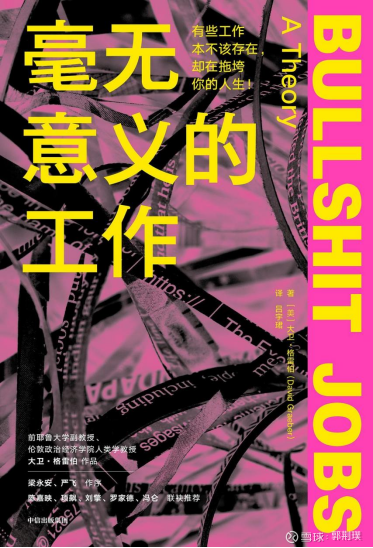
1. Pointless Work, David Graeber
This book suddenly became popular last year. David Graber said that this book inspired the “Occupy Wall Street” movement, so it seems that the popularity of this book in China in the past two years is justified. This book mainly discusses a question, why are so many people doing meaningless work now, just to deal with the boss or to flatter the boss? His conclusion is that bullshit work (this is the original text of the book title) is oppressive, mentally violent, and destroys what makes people human, that is, the ability to affect the world and connect with others. Bullshit work requires us to erase ourselves, to materialize into some kind of “something” that does what we are told. This book influenced my choice.
2. “Food the Poor” by Shigeo Saito
This book is the author’s observations on Japan. In the early 1990s, the booming economic development could not reach the corners, until the disillusioned family of negative husbands and Heisei otaku became the mainstream. Japanese office workers and housewives were already under tremendous pressure. . There are loan sharks, huge work pressure, the jungle and endless desires, as well as anorexia and bulimia. Compared with online loans, 996, appearance anxiety, etc. around us, it can be said to be a lesson. What kind of life do we want? We are forced to start our own lives before we have figured this out.
These two books should be read in comparison. In addition, I recommend “Work, Consumerism and the New Poor”, “AI Economy”, and “The New Dark Age” mentioned last year, and “Shallowness-How the Internet Has Poisoned Us” that I will talk about later The Brain”.
3. The Greek Spirit, Edith Hamilton
The Chinese version of Hamilton’s little book has also been republished. I probably read it for the first time when I was in college or when I just graduated, and I like it very much. The original name is the Greek Way. The core of the Greek way of life is that people should pursue becoming a complete person, not a specialist in a certain aspect. Don’t be a screw. Reading some books on the 19th century revolution and Marxism together, in this era of “996 is a blessing”, I am quite touched.
4. The Moral Basis of Trust, Eric Uslaner
This book is probably the most serious book I read in the Year of the Tiger. Trust is seen by many as a reward for good behavior, so the question is, if we choose to cooperate when we see others willing to cooperate, and then trust each other, how does the first person who chooses to cooperate think? The author uses a large number of statistical results to illustrate his point of view: behind trust is optimism and morality, which challenges many “experts” who have little knowledge of game theory, and also challenges the cold “economic man hypothesis”.
The existence of universal trust and its stability throughout its long history tell us that Hobbes’ worst nightmare never came true, and that the dark forest is just an imagination that will never cross into the real world. Very meaningful reading and thinking.
5. 1931: Debt, Crisis, and the Rise of Hitler, Tobias Straumann
The core point of this book is that the German financial crisis in 1931 came from the failure of Germany and its creditors to make timely adjustments to the compensation system to adapt to the rapidly deteriorating economic situation and capital market in Germany, and the differences in the interests of the victorious countries could not be bridged in the 1920s , the economic crisis led to a spiral dilemma that eventually exacerbated the Great Depression that began in 1929 on the one hand and allowed Hitler to seize power on the other. The interests of creditor nations, German democracy, and World War II all predate these fateful moments. This is a good book that is easy to understand, but it is suitable for reading only if you have a certain understanding of the history of the past 20 years.
6. The Grand Chessboard, Brzezinski
Brzezinski’s outlook in 1996, he clearly stated that his vision extended to about 25 years, and it is very touching to read this book after the 25-year period has expired. Brecht very presciently predicted the rise of China, the entanglement between Russia and Europe, and the positions of Turkey, Iran, and India in the big chess game. He is worthy of a generation of strategic masters. The most embarrassing thing is that his judgment is at odds with the current international political situation. It is not that there is a problem with his judgment, but that the ideal situation he imagined to balance the interests of all parties has not appeared. The choice deviates from his chess game, leading to many conflicts that should not have arisen. In fact, there are not many things that can be learned from the history of the next 25 years. As described in “1931”, many deeper contradictions have not been resolved. The causes of the superficial conflicts we see have been planted many years ago.
2. Technological progress – the most recommended is “How to Solve Complex Problems”
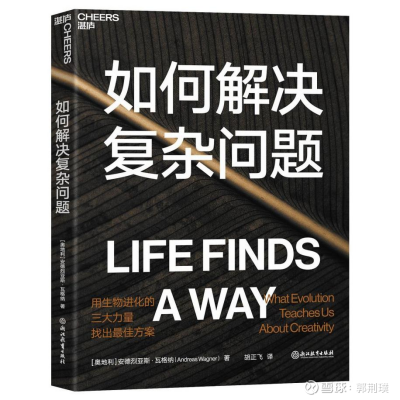
7. How to Solve Complex Problems, Andreas Wagner
This book is about evolution. Evolution is far more than natural selection. The survival of the fittest is not just the accumulation of random changes. It also has a broader picture, which the author calls (translated) landscape. This book gives three important forces of evolution, natural selection, genetic drift, and genetic recombination, and tries to use these theories to explain human creativity, organizational evolution, and thinking landscape. A very inspiring book, if you can compare it with several books by Barabasi, Bacher’s “Phase Transitions” that I recommended last year, and the Santa Fe Institute’s research on “emergence”. There are more revelations.
8. Cosmos, Carl Sagan
The text of Carl Sagan’s popular science documentary “Universe” was remade two years ago. It is a good popular science material. It is recommended for elementary and middle school students to watch, and parents can also accompany it.
9. Flatland, Edwin Abbott
Satirical reality works in the guise of popular science/science fiction. It is a very good popular science material for elementary and middle school students. It explains the multi-dimensional space very vividly. In the future, you will not be fooled by the bad short video and fake science, thinking that high-dimensional space is something mysterious. The author satirizes the Victorian social system, including strict hierarchy, sexism, etc., which is very interesting, and it is said that Asimov liked it very much.
10. A Travel Guide to Black Holes, Jenna Levine
The translation is less than 50,000 words and there are no mathematical formulas. I think it is also an understandable black hole textbook for those who have forgotten or have not studied advanced mathematics. Nowadays, a lot of publicity writes science popularization too lofty. In fact, the target readers of “A Brief History of Time” are junior high school students around 15 years old. Don’t imagine physics too deep. Good physics popularization should be able to Understandable, like this book.
The prologue is pretty bad, don’t watch it.
3. Investment and financial crisis – the most recommended is “The Great Depression in the United States”, and the reading notes have been sorted out.
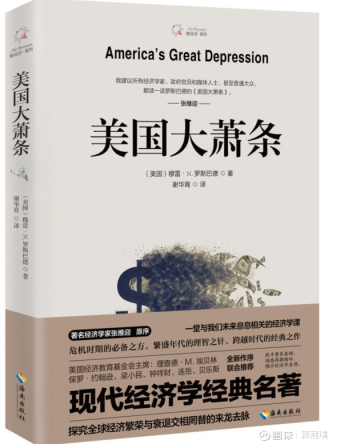
11. The Great American Depression, Rothbard
Explaining the Great Depression is the holy grail of macroeconomics. In this book, Rothbard makes a point that will startle many readers (including me): Hoover was the forerunner of Roosevelt’s New Deal, and he implemented almost all the policies that were later attributed to Roosevelt’s merits. The only difference was Roosevelt’s public opinion. Propaganda is more successful. He eloquently demonstrated how the consequences of credit expansion and interventional policies created the Great Depression step by step. The real cause of the Great Depression was the monetary policy of the Federal Reserve and the US government in the 1920s and the strategy to guide credit expansion.
12. “Tiger Fund Julian Robertson” by Daniel Strackman
The English version of this book was published in 2004, a biography of Robertson launched about three or four years after Tiger Fund was liquidated. My interest in Robertson’s legendary life mainly comes from the afternoon when he sent the famous liquidation letter to investors. How did he defeat the investment masters of that star-studded era at the same time in terms of scale and performance? And how was it destined to be liquidated? The market proved him right a month after he was liquidated. Robertson is rarely analyzed in China, and this book is a good start.
13. “Understanding the 14th Five-Year Plan”, Liu Shijin (editor-in-chief)
This book is a summary of relevant research on the “14th Five-Year Plan” and China’s economic and social reforms to 2035 commissioned by the relevant decision-making departments of the central government at the beginning of 2020. Liu Shijin is the person in charge of the specific organization of this work and is also the The editor-in-chief and authors of this book include Cao Yuanzheng, Zhang Ping, Huang Yiping and many well-known economists. The main purpose of this book is to explore various reform measures to achieve the goal of moderately developed countries in 2035, and more than one economist has pointed out the challenge of surpassing the United States in terms of economic aggregate contained in this goal. It’s worth reading.
14. “ESG Investing”, Mark Molbius
Mobius is a pioneer in emerging market investment. He has devoted himself to the preaching and practice of ESG investment for nearly 10 years. Since “Silent Spring” opened up the environmental awareness of the baby boomers, the pursuit of environmental impact, social impact and governance has become more and more obvious in the fluctuation of return on investment. ESG is a connection point and a consensus. How to use this consensus to obtain good economic returns is a problem that investors must face, and how not to make mistakes in ESG is also a challenge for business operators. ESG cannot be underestimated, nor can one be satisfied with current ESG investments.
15. “EVA Assessment, Debt Financing and Enterprise Investment Efficiency”, Li Xintong
This book is the result of the author’s doctoral research. The author points out that the core point of the EVA assessment is the agency problem. People who pay attention to the governance of domestic enterprises, especially state-owned enterprises, may get inspiration from this book and reconsider the method of valuation of state-owned enterprises.
4. Words of mouth and various success stories
With the greatest malice towards success studies, I put the books I don’t like into this category. Schultz’s “Injecting the Heart” would have had a similar structure and theme to some of the books in this category, but the contrast between Schultz’s straightforward style and Starbucks’ brilliant story saves the book. Books under this column are not recommended for reading.
16. “Bezos Letter to Shareholders”, Steve & Karen Anderson
17. “Essence – Bezos’ Business Logic and Leadership Laws”, Helena Hunt
The first book is the “Test-Build-Accelerate-Scale” model and 14 rules summarized by the two authors from Bezos’ letter to shareholders, and the second book is the author’s collection of Bezos Sri Lankan quotations come from a wider range of sources. Amazon is the most successful company in survival, development and transformation from Web1.0 to Web2.0. Bezos’ business philosophy and vision are impressive. The success video at the airport has been replaced by Jack Ma’s quotations. Bezos’s quotations are also worth reading, but I suggest you read the original text.
18. “A Book to Understand Web3.0: Blockchain/NFT/Metaverse/DAO”, a15a/0xAres
19. “Web3.0, Changes and Challenges of the Next Generation Internet”, Yao Qian, Chen Yongwei
a15a is a Web3.0 research group composed of volunteers, and 0xAres is a Web3.0 popular science blogger. This book introduces the development history of blockchain, basic concepts such as Ethereum and oracles, and then introduces NFT, meta Concepts and applications such as universe, DAO, and DeFi are full of ambitions, but their writing skills are terrible. Somewhere the author said, “Don’t understand? It doesn’t matter, it’s right if you don’t understand.” I thought to myself that I, a person who can understand quantum mechanics, can’t understand your article. Is it my problem? In fact, looking back at history, preachers are often masters of speech and logic. Obviously, these authors are still too immature.
In comparison, another popular science book produced by the Research Department of “Comparison” is much more mature in terms of writing, and it is much more traditional with the former director Yao in charge. The policy suggestion part may be worth reading for some people. But not for me. These two books are really still, not worth the 40 yuan I spent.
Perhaps the world of blockchain is really rising too fast. A book published in March 22, Reading Web3.0, still introduces Sanjian Capital passionately. A few months later, Sanjian Capital, which faced bankruptcy, failed Knowing what the writers think, I find it rather embarrassing.
20. “Leadership Lessons from a Master Conductor”, Itai Targmar
This book is a book on management written by Bernstein’s student and the conductor Targmar of the Tel Aviv Philharmonic Orchestra. It is to take a step back and listen when encountering problems), explore the gap and get along with the gap, create space with keynote listening, and stimulate the creativity of organizational members, rather than brutally suppressing such a management method.
What the author wants to express is to fully educate the members of the organization, and then let them be creative. The book is a good book, but I am really not interested in management, so it can only be classified as a slobber book. I’d better listen to the timeless works conducted by Muti, Toscanini, Richard Strauss, Karajan, Kleiber and Bernstein, and get high.
21. “Card Note Writing Method”, Shank Ahrens
Most read this year. . . A painful book, nearly 110,000 words, took me more than a week, in fact, about half an hour of discussion, or an article about 10,000 words introducing sociologist Nicholas Luhmann, is enough to fully explain Luhmann Created card notes writing method.
The card note writing method is a very good working method. Knowledge can gradually form a superstructure beyond the tree structure in the notes, automatically organize and generate interesting topics and meaningful interactions, but try not to read this book to learn This method is too tortured.
5. Coffee, food and music – the most recommended is “Shark’s Fin and Pepper”
Coffee, cola, tea, every beverage that is popular in the world, together with alcohol, is an industry worth hundreds of billions of dollars, and the leading companies are also companies with a market value of hundreds of billions of dollars, which deserves to be taken seriously by every investor.

22. “Shark’s Fin and Pepper”, Fuxia Dunlop
This book is about a British girl who can speak Trump fluently, a person who loves to eat, dares to eat, and knows how to eat more than me. The experience of learning how to cook, making friends, and traveling in Sichuan and other parts of China is very worth reading. This book is the best food book written by a foreigner that I have read in recent years. It is very sincere and the recipes in it are also very real. The interesting thing about this book is that a foreigner tries hard to integrate into Chinese culture, but her cultural background is so profoundly Western-style, and the lines between the lines make people think a lot. I would like to thank the golfers @不想见见的话搜的Recommendation~
23. Eating Adventures, Rob Walsh
It’s a bit like if the Discovery Channel made a documentary about Beethoven. Walsh is a typical American columnist, with a bit of southern pride, but also trying to bring some anecdotes to Northeast WASPs that they have never heard of. The wild wild rice introduced in the book seems to have appeared in the documentary broadcast by CCTV. Worth reading for the sake of curiosity, but not much else.
24. Pour Your Heart In, Howard Schultz
This book is the autobiography of Schultz, the founder of Starbucks, and expounds Schultz’s philosophy: the company should be people-oriented and value-oriented, not profit-oriented. A company doesn’t have to lose its passion, its personality and its dreams to grow bigger and stronger.
Schultz is a great storyteller, like Amazon founder Bezos, who also thrived in Seattle. Schultz gave a slogan full of dreams. A successful company should represent something, and a great company often represents something bigger than products and brands.
Starbucks represents coffee. Many of my friends will say in the afternoon that we go to Starbucks instead of coffee. This is an occupation of the mind; Starbucks represents romance and affordable luxury in Schultz’s view , which is a generalization and change of the way of life, from which he put forward the concept of “the third space”.
In the book, Schultz also explained why Starbucks employees do not need a union. Compared with the news that Starbucks established a union during the epidemic, it must be said that the taste is worth pondering.
25. God’s Drink: A History in Six Bottles, Tom Standage
Overproduction of food produced beer, warehouses were transformed into temples; maritime trade supported wine and the classical world of the Mediterranean, wine made civilization and bound wealth and power; distilled spirits were born from technology conceived by alchemy, and ocean voyage Therefore, it is a product of the Renaissance and the Age of Discovery, and it is also the first global drink, marking the beginning of human beings to globalize; coffee brings sober day and night drunken debate, gave birth to the Enlightenment and brought Coffee is a cultural symbol of the bourgeoisie; the story of tea in Western civilization is accompanied by industrialization, colonialism and global domination. Tea is inseparable from the empire on which the sun never sets; The United States is like tea to the United Kingdom. Industrialized mass production, sophisticated division of labor and global supply chain, patent protection and dissemination based on secret recipes, and the equality and universality of cola are the national characteristics of the United States.
That’s basically what this book is about.
6. Rumors and Epics/Language, Power and Human Dreams ——The most recommended is “Shallow—How the Internet Has Poisoned Our Brains”
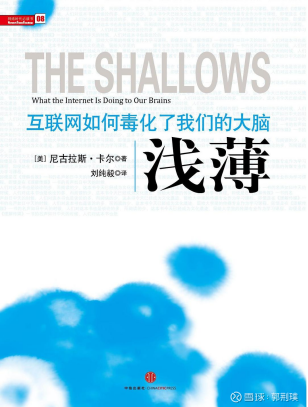
26. “Shallowness – How the Internet is Poisoning Our Brains”, Nicholas Carr
At the end of the year and the beginning of the year, the most exciting and anxious thing is the development of artificial intelligence. Although there is still a distance from a real breakthrough, the development of AIGC has attracted the attention of many eyeballs and investors who don’t understand. This “Shallowness” written more than ten years ago is worth reading. Since Hal’s ritualistic death in 2001: A Space Odyssey, when will robots/artificial intelligence replace humans has been a favorite topic of public opinion, but the authors of this book raise other questions as we increasingly rely on machines At times, we must ask ourselves, what is the difference between human intelligence and artificial intelligence or computers? What makes us humans different?
Before search engines and Dianping appeared, there were a few foodie friends around us, and if we didn’t know where to eat, we would ask them. Now that we have Dianping and Xiaohongshu, we don’t need them anymore. This is just a small example. Technology has changed our way of life, but many people don’t realize that technology has actually changed our way of thinking and social topics.
Technology has been changing the way of human thinking, which has been the case for the past 11,000 years. This is not terrible. The premise is that we can answer that we, human beings, dominate the development of technology and embrace the convenience and convenience brought by technology. Our change, we are not slaves to technology. But now we can still say so confidently? When technology and algorithms determine what we see in the next second, guide us in what to eat in the next meal, and what our next generation will look like, we can still say loudly that we are born as human beings. Is it an independent entity instead of a screw?
In the last chapter of “Shallowness”, the author quotes Psalm 135 of the “Bible·Psalm”:
their idols,
It is gold and silver, and it is made by human hands.
have mouth but cannot speak,
have eyes but cannot see,
have ears but cannot hear,
Has a nose but cannot smell,
have hands but cannot touch,
have feet but cannot walk,
I can’t make a sound even if I have a throat.
He who made him will be like him, and so will all who trust in him.
Is what we human beings created surpassing human beings? This book is worth reading.
$Meta Platforms(META)$ $Tesla(TSLA)$
27. The Communist Manifesto, Marx & Engels
28. The Meaning of Life, Will Durant
29. “Death, Life, Destiny and Wealth Are in Heaven”, Li Ling
30. “The World of the Book of Songs”, Bai Chuanjing
what is the meaning of life? Is it resistance and revolution? Are individual struggles integrated into larger group narratives? Is it the manifestation of heaven in the physical world and in the personal spiritual world? Or pursue beauty? Four books of philosophical reflection or battle cry, explaining the Book of Changes, the Book of Songs, or the declarations that we all learned in middle school but not necessarily read in full, each one seems very interesting. Should a person’s thoughts resonate with the human group? Each has its own answer.
31. Wisdom and Charms, Taleb
32. History in Symbols, Sarah Bartlett
33. “The Rose Demystified – Cultural History and Semiotics”, Frankie Hatton
These three books are all related to symbols and meanings. The latter two tend to be popular, a little complicated and exaggerated. Taleb’s “Wisdom and Charms” is more like a collection of aphorisms. Perhaps Taleb’s ideal is to do A Nietzsche of finance, worth reading.
34. “The Water God of China”, Huang Zhigang
35. “Strange Records of Ancient China”, Hu Yanyun
36. “Japanese Fairy Tales”, Ozaki Theodora Eiko
These books are about myths and legends.
Mr. Huang Zhigang’s “Water God of China” was first published in 1934. Mr. Mao Dun highly praised it as the first book that made significant achievements in the study of Chinese mythology at that time. The book discusses the relationship between God Erlang, General Yang Si, Li Bing who made Dujiangyan, and even the myth of Dayu. It answers the question “Why is God Erlang surnamed Yang”, which is very interesting.
“Anecdotal Records of Ancient China” is a collection of 30 essays compiled by Beijing Evening News columnist Hu Yanyun and based on various notebooks and novels. It involves the secrets of palaces, gods and ghosts, anecdotal analysis, etc. It is interesting and well-founded at the same time. , It is very suitable for leisure and long knowledge after dinner. After reading it, I can’t help but sigh, “The unofficial history is recorded, but what is recorded is the righteous way in the world, which is thought-provoking.”
“Japanese Fairy Tales” is a collection of fairy tales and myths compiled by Eiko Ozaki to introduce Japanese culture to Westerners. It is also very beautiful.
37. “Litchi in Chang’an”, Ma Boyong
38. Fahrenheit 451, A Song of Ice and Fire, Ray Bradbury
39. Oedipus the King, Sophocles
These are all novels or plays, from different times and different countries.
Needless to say, Prince Ma’s popularity and achievements in recent years, Chang’an’s lychee has a feeling of being replaced by ancient people’s life terms. However, the historical and cultural details in the prince’s writings are still very sophisticated. The plot is vivid and coincides with the big history, which is worthwhile. first read.
Bradbury is my favorite science fiction writer, always full of humanistic care. His “Fahrenheit 451” is often regarded as a utopian work by people who don’t understand it. In fact, if you read it carefully, you will understand. What he was fighting against was actually commercial publishing and censorship. “A Song of Ice and Fire” is actually a romantic translation, also translated as “Frost and Fire”.
Sophocles’ “Oedipus the King”, together with Aeschylus’ “Orestes” trilogy and Euripides’ “Medea”, can be called the pinnacle of ancient Greek tragedy. The poet’s ability to promote the development of the drama is at its peak, and at the end repeats the belief of the Greeks: “While we wait to see the last days, do not say that a mortal is happy.”
40. Blue, Maggie Nelson
“Don’t make the mistake of thinking that all desires are desires.”
That adage alone is worth reading. This book is a collection of various aphorisms, discourses, and scientific researches about blue that the author has collected, connected with her thinking, and it is a very wonderful book. Allow me to quote one more paragraph.
“Love is not comfort”, Simone Weil said, “Love is light”. In life I aim to be a student of light rather than desire.
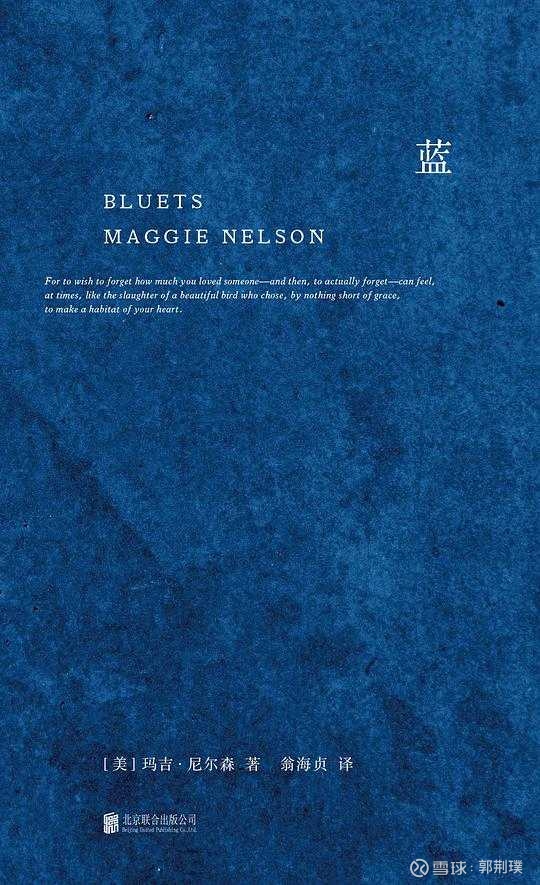
I wish you all good reading and fortune in the Year of the Rabbit~
There are 44 discussions on this topic in Xueqiu, click to view.
Snowball is an investor social network where smart investors are all here.
Click to download Xueqiu mobile client http://xueqiu.com/xz ]]>
This article is transferred from: http://xueqiu.com/7571730629/240560118
This site is only for collection, and the copyright belongs to the original author.